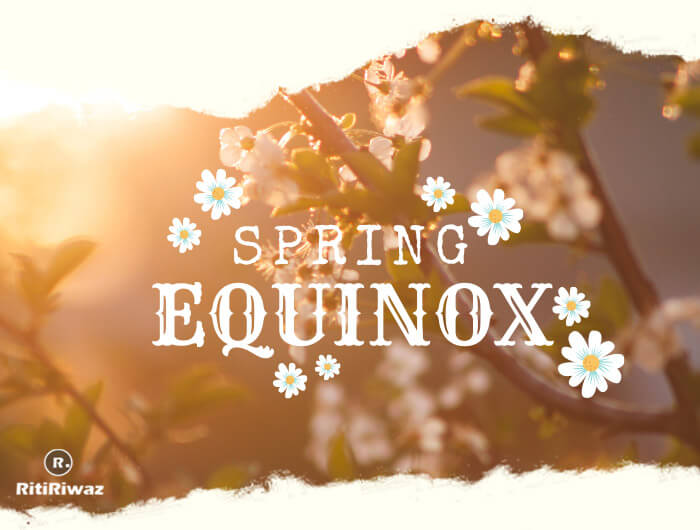Spring Equinox – The First Day Of Spring

The first day of spring is Spring Equinox also called march or vernal equinox that occurs on March 20 or 21. It is signaling the return of sunshine, warmer temperatures, blooming flowers, and birds, bees, and butterflies in the Northern Hemisphere. When the Earth’s axis is vertical relative to the sun. Day and night are roughly (though not quite) equal and it happens only twice a year, in the spring and fall. This special day marks the middle point between winter solstice and summer solstice.
In 2025 Spring Equinox will fall on Thursday, March 20.
The seasons change, as there are equal days and equal nights everywhere on our planet. We leave the dark of winter and embrace the light of summer. All of nature is revived after winter hibernation. As the old pagan chant goes: “Equal day and equal night, first the dark and then the light.”
What is Equinox
Equinox is a Latin word that translates to mean “equal night” (equi – equal nox – night) and it refers to the length of the night being equal to the length of the day. There are two equinoxes every year, the spring and autumn equinox in March and September respectively.
The equinox occurs because of the tilt of the Earth in relation to the Sun. On the equinox, the sun shines directly on the equator. On every other day of the year, it shines a little above or below creating longer days or longer nights. By contrast, the winter and summer solstice is marked by being the shortest and longest days of the year (shortest in winter, longest in summer).
With signs of new life popping up all around, spring makes it easy to marvel at the wonder of Nature, to notice her rhythm, and to reconnect to our own intentions and the things that bring us joy. As flower buds appear on barren branches and bulbs send up vibrant colors from beneath the ground, we’re reminded of Nature’s infinite beauty and of our own access to endless possibilities.
Suggested Read: 10 Ways to get ready for springFacts about the Vernal Equinox :
• The first day of spring rarely has exactly 12 hours of daylight and 12 hours of darkness.
• There is always a time each spring, and again in the fall when the number of hours of light and darkness is equal, but it usually happens before the vernal equinox and after the autumnal equinox.
• The fall and spring equinoxes are the only two times during the year when the sun rises due east and sets due west.
• The equinoxes are the only days of the year when a person standing on the equator can see the sun passing directly overhead.
• If you’re at the equator during the vernal equinox, the sun will be directly overhead the entire day.
• On the Northern Hemisphere’s vernal equinox day, a person at the North Pole would see the sun moving across the horizon, starting six months of nonstop daylight.
• People at the South Pole would also see the sun glide across the horizon, but for them, it would mean the start of six straight months of darkness.
• Spring almost always arrives on March 20 or 21, but sometimes comes on March 19.
• The first day of spring in the Southern Hemisphere is the date of the autumnal equinox in the Northern Hemisphere, usually in September.
• Easter always falls on the first Sunday after the first full moon after the vernal equinox.
• Egyptians built the Great Sphinx so that it points directly toward the rising sun on the day of the vernal equinox.
• In Japan, during the March and September equinoxes, Higan is a week-long Buddhist celebration when families visit graves and hold reunions.
• In ancient Egypt and Persia decorated eggs were exchanged at the equinox (eggs were considered to represent creation and fertility).
• The first day of spring also marks the beginning of Nowruz, the Persian New Year.
• Every solstice and equinox people from all around the world come to Stonehenge, which was constructed to align with the changing seasons 5,000 years ago.
